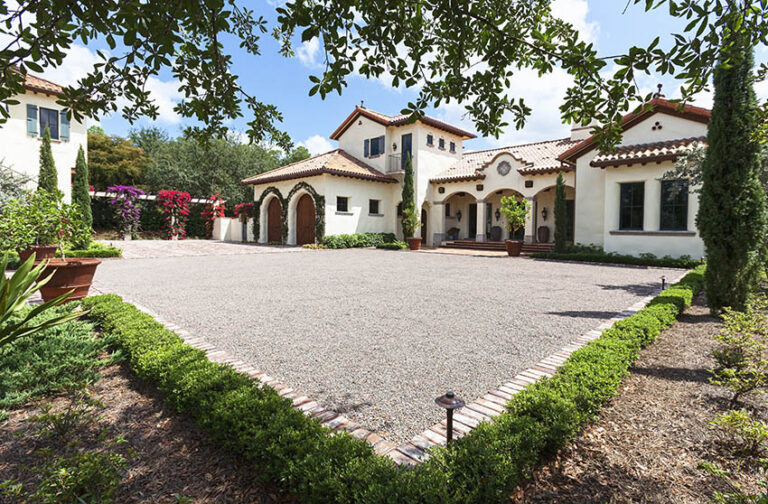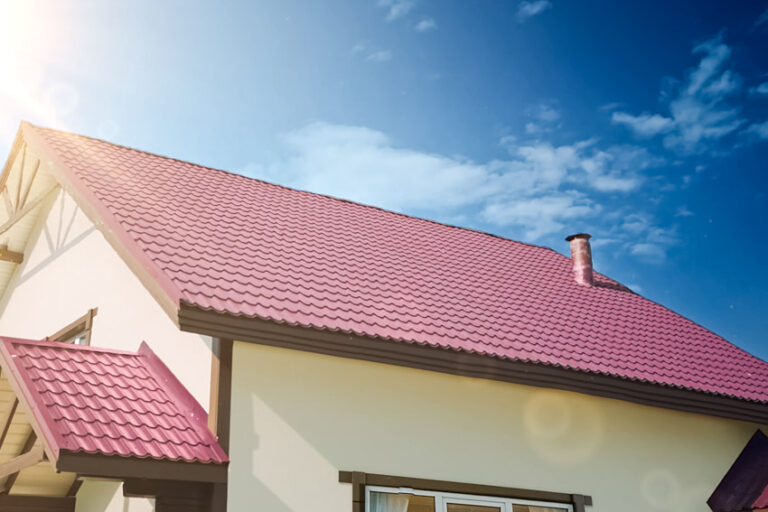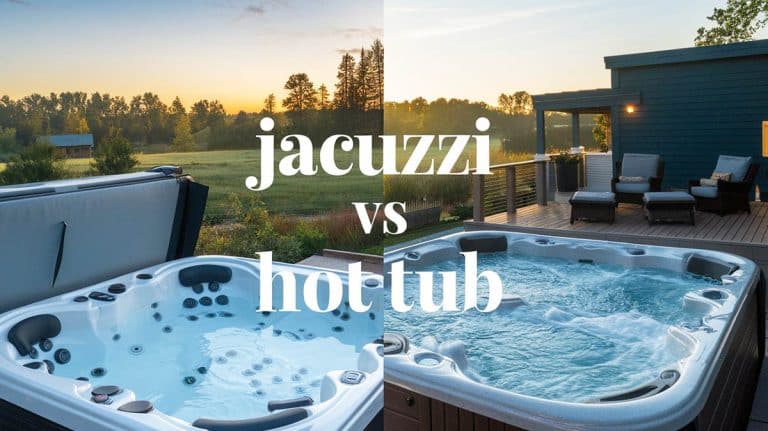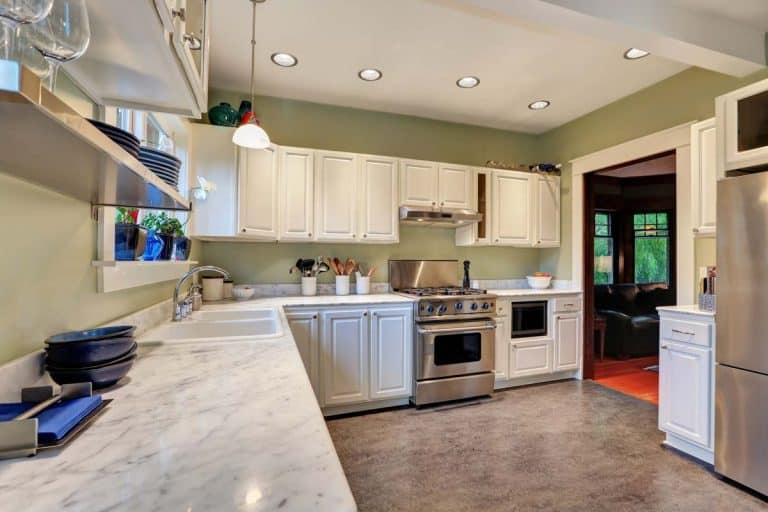Types of Travertine (Styles & Design Guide)
Here we share our types of travertine design guide including the different styles, grades, cuts, colors, edge finishes and cleaning tips.
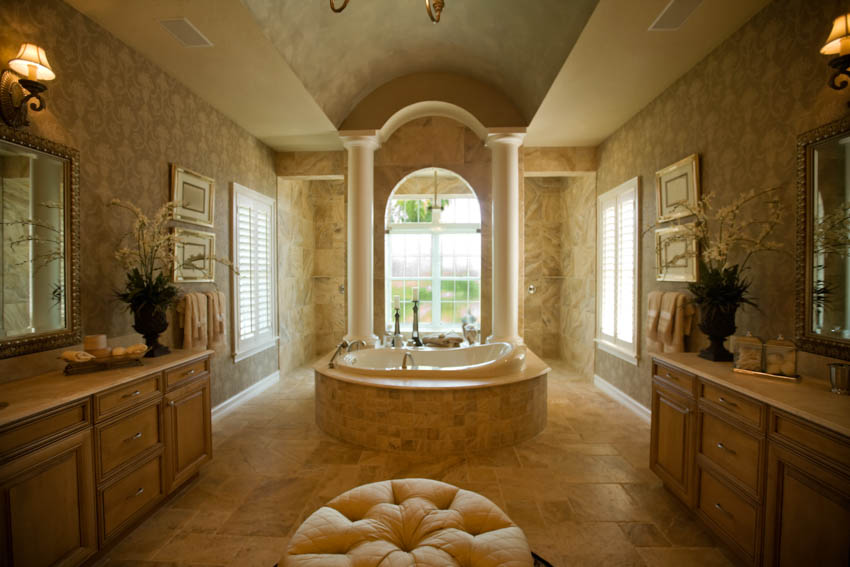
Travertine is an attractive natural stone used as a building material. In many aspects, it is similar to granite and marble with its earthy tones and organic patterns, as well as in the way it is used around the home.
Nonetheless, travertine developed a distinctive appearance from other natural stones over time. While timeless and beautiful, travertine is becoming the most followed interior design trend for this and the coming year.
As the world is shifting to a more eco-conscious route, natural stones are once again receiving the spotlight. So whether you’re renovating your home or in the middle of building a new one, now is the best time to specify appealing natural stones like travertine.
Find out more below about the many choices you have when it comes to travertine.
Travertine is used for a variety of purposes in the home and thus, can be categorized into many things.
When it comes to flooring, for instance, travertine can either be in the form of tiles and pavers. The former is usually thinner and more refined, while the latter is thicker and chiseled.
In addition, you can also choose your travertine surface by grades, cuts, or finish – depending on what you intend to achieve. Is it for functional or aesthetic purposes or both? These categories sometimes merge, so you have to consider the merits of each and all together.
Travertine Stone Tile
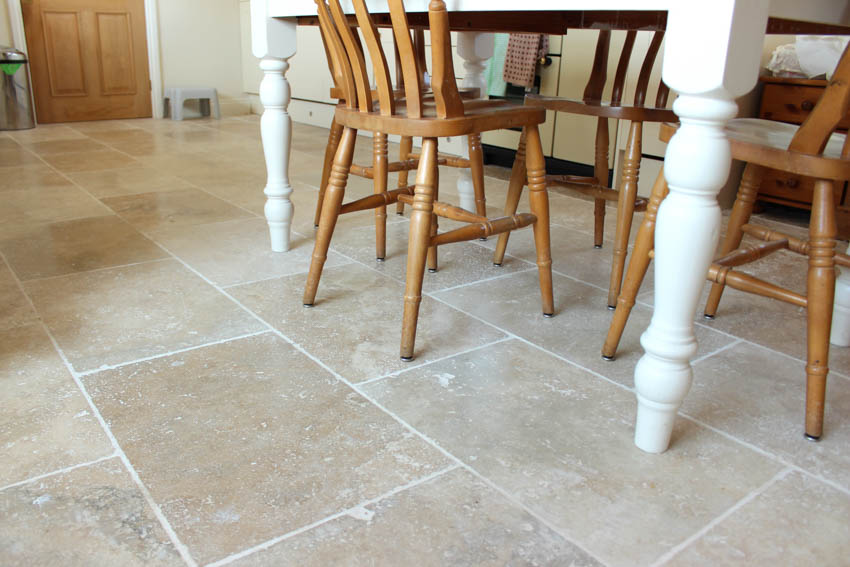
Travertine tiles are regarded for their durability, beautiful colors and patterns, and the value that they add to your home. They are versatile in appearance and texture, so you’ll find a travertine tile for every part of your home.
Like any natural tile, however, they may be susceptible to etching and sensitive to acids. Travertine tiles are common flooring and backsplash materials.
They can also be used as wall cladding, finishing, and countertops. These tiles can also be used outdoors, albeit they need to be mortared on top of concrete (mud-set).
Exterior tiles for patio decking or pool coping need to be sealed every one to two years to protect their surface and prevent damage.
• Thickness: ½”
• Edges: Squared
• Sizes: 12×12”, 16×16”, 18×18”, 24×24”
Travertine Pavers
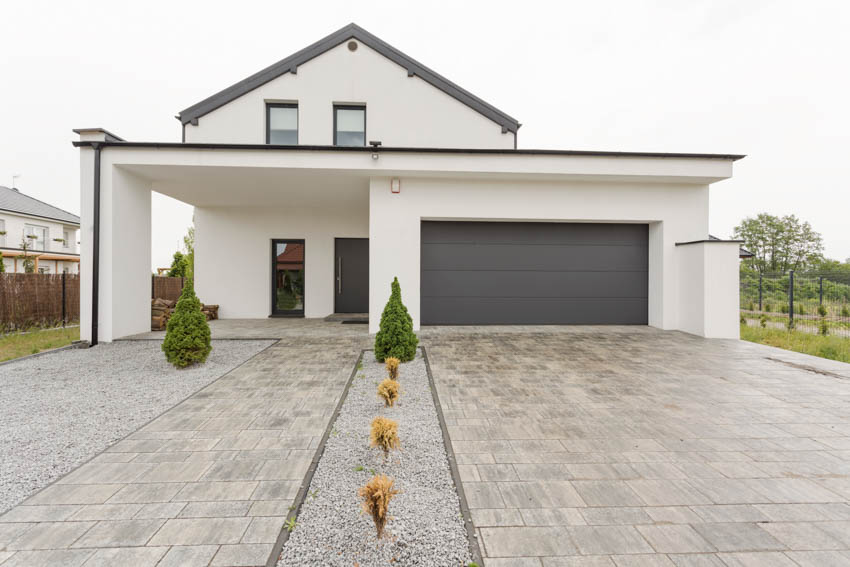
Travertine pavers are common landscape and outdoor stones. They are thicker and heavier, that’s why they can be installed into the ground without concrete and grout.
Most, if not all pavers, have a rough finish as well, making them ideal for poolside areas to prevent slips and falls. They don’t retain much heat and can withstand extreme temperatures, moisture, and sun exposure.
• Thickness: 1 ¼” – 2”
• Edges: Chiseled or tumbled
• Sizes: 12×12”, 14×14”, 12×18”
The choice of whether to opt for tiles or pavers largely depends on the space and how it will be used. Travertine pool decks, patios, walkways, and outdoor spaces will benefit from pavers’ durability, while any indoor spaces can be made better with the elegance of tiles.
Travertine Grades
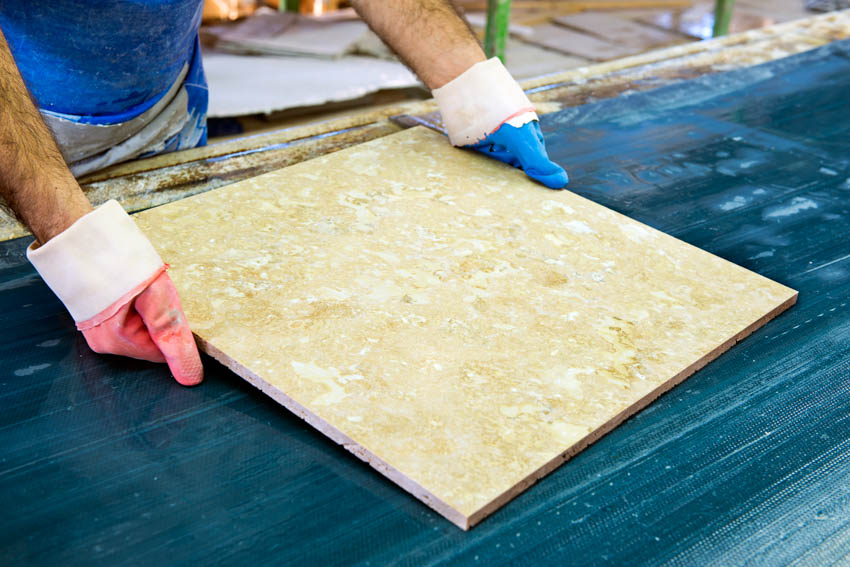
Travertine usually comes in three grades: the premium, standard, and commercial – or the first, second, and third grade, respectively. Grades define the thickness, pores, preciseness of cuts, and overall quality of travertine tiles.
Premium of First Grade: Premium grade travertine is precisely cut, has little filler, and maintains uniform thickness throughout.
It has the most selection of colors while remaining consistent and without any gray or black discoloration. Premium grades have smooth beveled edges and are double-filled, meaning voids are filled by machinery and by hand.
Standard or Second Grade: Standard grade travertine offers the same precise cuts, uniform thickness, and little discoloration.
However, it may contain some striations and a bit more filler on large holes than in premium grades. Nonetheless, it promises smooth and uniform edges as well.
Commercial or Third Grade: In commercial grade travertine, large color variations and some gray and black markings are allowed.
The tiles are completely machine-filled and may lack the meticulousness of going over by hand. The edges may have some cracks and small holes are allowed to run along its surface.
Travertine tiles and pavers are naturally porous, however, they should not be large enough to be considered holes. For the best quality flooring, it is highly recommended you use premium grade travertine – unless you’re intentionally going for a “rustic” look.
Standard grade, on the other hand, can be an alternative for poolside settings because they are more porous and absorbent.
Travertine Cuts
Besides the three grades, travertine can also be categorized into two types of travertine cuts. These are the Cross Cut and the Vein Cut.
When travertine is still a big slab of stone, it has what is called “bedding planes” or layers similar to grains in the wood. These lines are formed from years of sediment compression.
Cutting along or opposite the direction of the bedding planes creates different patterns and appearances on the travertine stone.
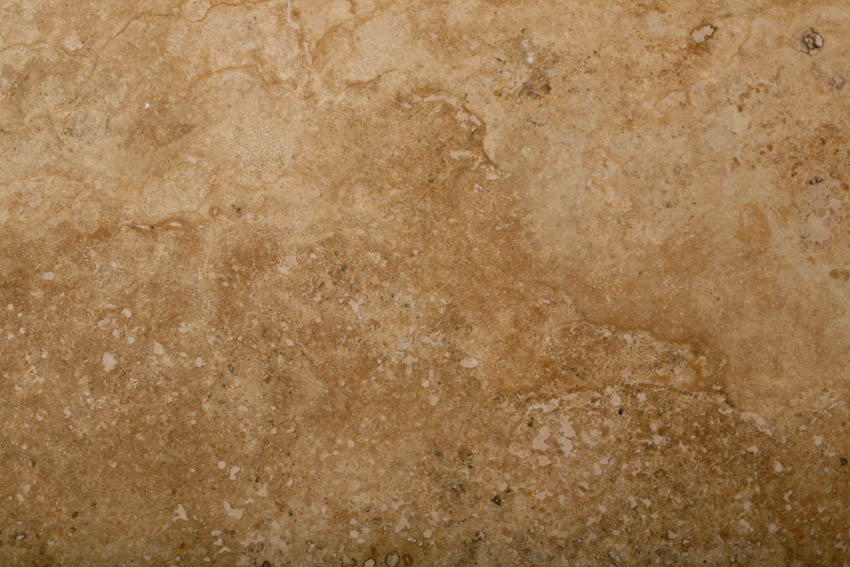
Cross Cut Travertine
Also known as fleuri cut, cross-cut is slicing through the bedding plane. This cross-sectional view shows random patterns that are often circular in shape.
The cross-cut creates relatively non-uniform tiles, but they still remain cohesive altogether. Designers often use this cut for a more artisanal touch brought about by each unique tile pattern.
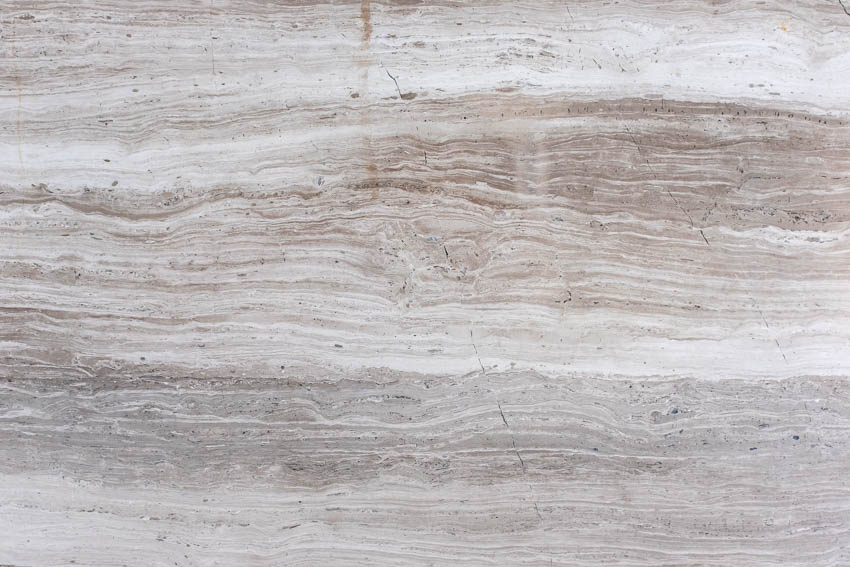
Vein Cut Travertine
The vein cut is a cut made against the stone’s natural veins. This presents the layers of sediment running lengthwise on the slab.
Vein-cut travertine is a popular choice for indoor use, such as in the living areas, kitchen, and bathroom. Designers love specifying this type for high-end spaces, while homeowners find comfort in the zen-like ambiance that the linear and flowing veins create.
Travertine Colors
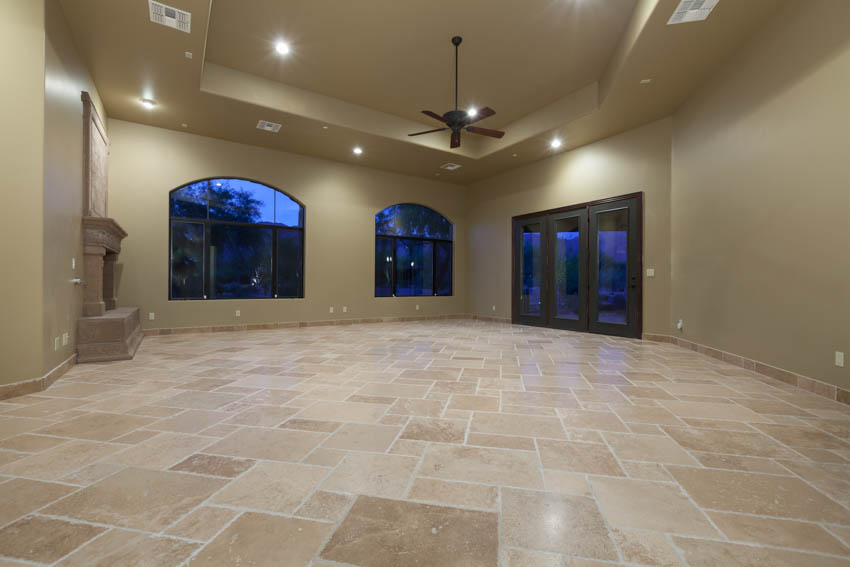
Travertine is available in a range of warm, neutral tones. It comes in beige, brown, tan, cream, ivory, yellow, gold, and orange, as well as blue, black, and grey.
Individual tiles almost always vary in color, but these subtle variations are monochromatic and brought about by the stone’s beautiful natural patterns.
Some of the most popular color names and schemes include:
Noce: A variety of walnut shades, including browns, tans, medium gold, and dark coffee tones
Durango: Light khaki to a cloudy ivory blend of tones
Rose: Deep shades of pink and cream
Philadelphia: Earthy colors, tans, and browns, with high levels of natural striations
Silver: Warm ivory with hints of grey that creates a silver appearance
Onyx: Pale to honey yellow tones and cream
Gold: Richer shades if yellow, orange, and gold
Beige: Classic light ivory shades
Whether you have different types of travertine as wall or flooring, most tones go well with warm whites and different shades of blue, green, and grey.
Wood furniture on travertine keeps a space looking organic and eco-inspired, while bronze and copper hardware follow the stone’s elegant theme.
Travertine Edge Finishing
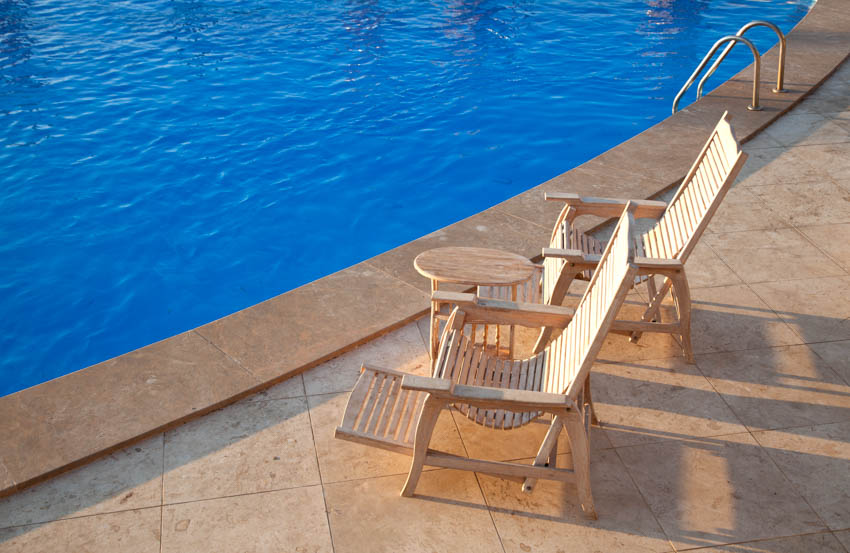
There are different types of travertine finishes you can have. The most popular ones include the honed, polished, and brushed finish, while other finishes for select areas are chiseled, tumbled, and saw cut.
Every finish aims to display the travertine’s natural beauty, but each unique texture fulfills different purposes in the home as well.
Honed Travertine
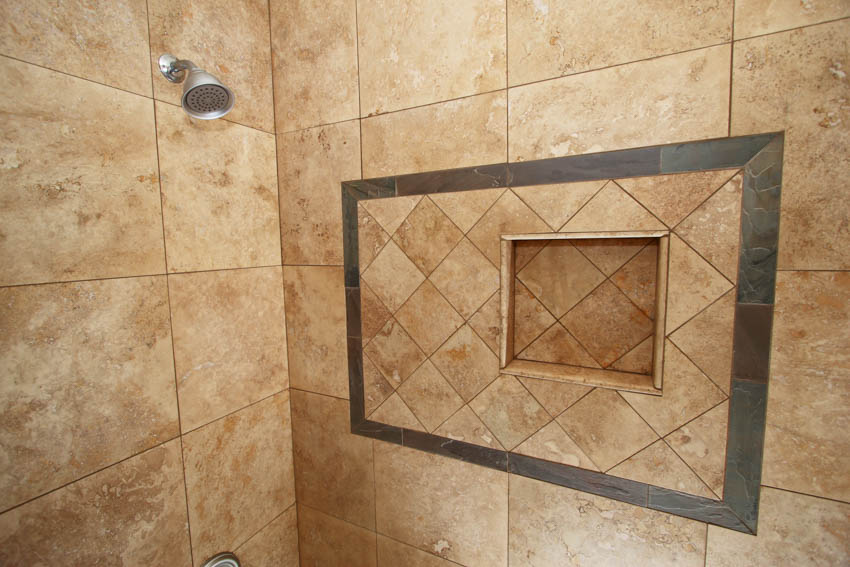
A honed finish provides a smooth surface albeit with less shine. This look is achieved by filling tiny holes and pockmarks with epoxy grout or resin and honed as the name implies. It has typically squared edges and is a popular choice for a variety of areas in the home.
Honed travertine has an almost matte finish and can be used for many different purposes. You can use them on countertops, backsplashes, or fireplace surrounds. They look great in the kitchen, bathrooms, stair treads, and outdoor areas, too. See examples of travertine countertops here.
Polished Travertine
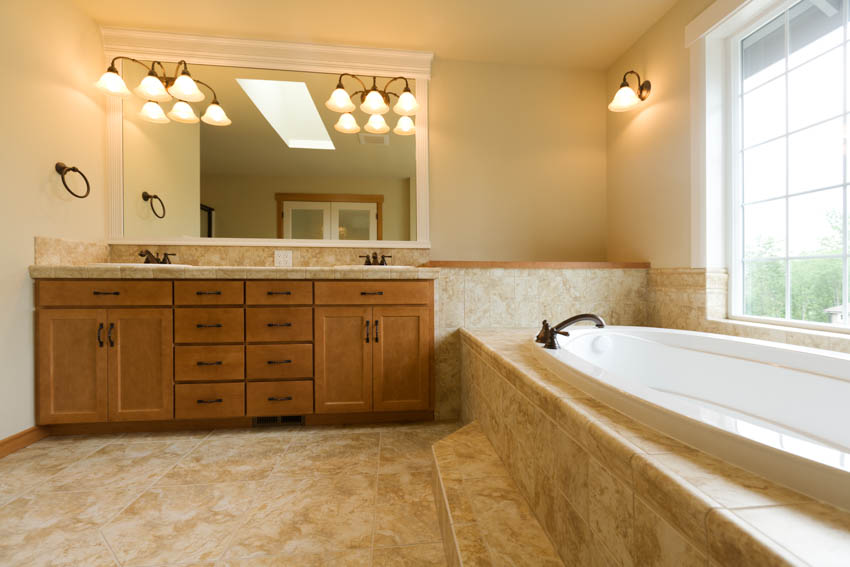
One of the most common finishes, polished travertine imitates a mirror effect where it reflects light and objects subtly. It is cut to precise 90-degree angles and maintains a glossy texture.
This sleek and modern finish works best in high-end spaces. However, polished travertine can be slippery, so avoid using them in showers and poolside areas.
Polished travertine creates luxurious living rooms, lobbies, and entryway floors, as well as countertops, tables, and furniture.
Brushed Travertine
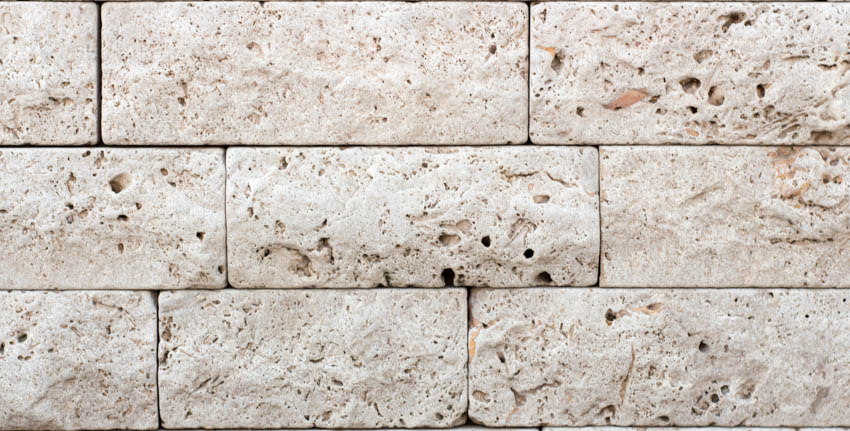
From the name itself, the brushed finish is made by brushing the stone’s surface with a wire wheel or brush up to the desired texture.
It is often unfilled, meaning it has many visible holes. Moderately textured, it is a cross between the honed and tumbled finish, and can be used in the same situations.
Brushed travertine is commonly used as backsplashes, in walk-in showers and tub surrounds, outdoor areas, and for spaces where you want to display an antique-looking floor. See pictures of travertine showers on this gallery page.
Tumbled, Chiseled, and Saw Cut
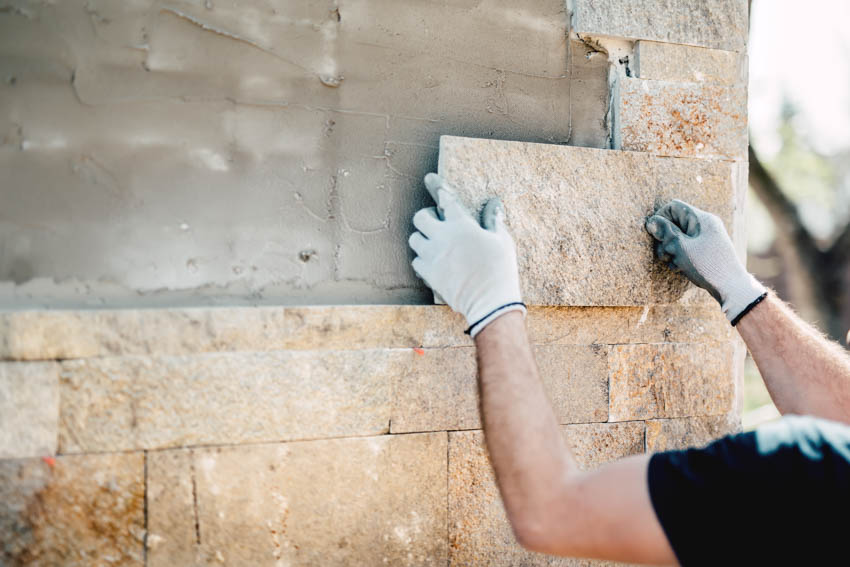
Tumbled types of travertine have a rougher and more “rustic” look. It is made by tumbling small similarly-sized stones in a barrel with abrasives, water, and sometimes acid. This process softens the surfaces and creates a worn look best used in outdoor spaces.
The saw-cut finish is a straightforward matte finish cut from a wet saw. The chiseled finish, on the other hand, is more of an irregular edge finish. It adds the same weathered appearance commonly paired with a honed or brushed finish.
To know which finish you need, you have to know what the space is for. If you’re using travertine outdoors, perhaps a more textured and porous finish is best. For indoors, you may want to invest in sleek, easy-to-clean tiles.
Will the space be exposed to water? Will the room receive heavy traffic? All of these are important in choosing your travertine finish.
Filled vs. Unfilled Travertine
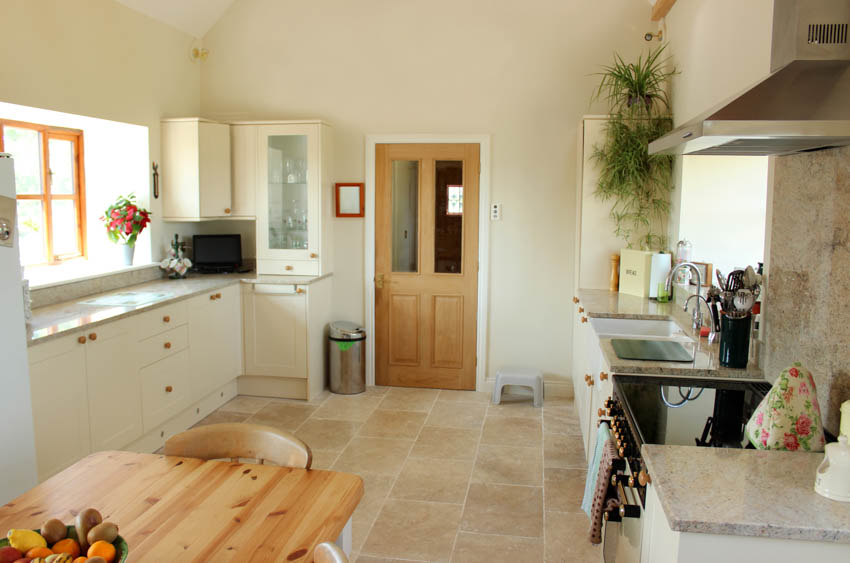
When you’re dealing with the different types of travertine, you will always encounter the terms “filled” and “unfilled”. These terms pertain to the stone’s inherently porous condition or its tendency to have naturally occurring holes.
Unfilled Travertine: Travertine that is not or least treated, meaning it remains in its natural porous state. Since its holes and irregularities are exposed, it creates a rustic or organic-looking finish.
Filled Travertine: The travertine’s pores or holes are filled with a color-matched material, usually a mixture of cement, dust by-product, or other hardeners. This process then creates a flat and smooth surface.
What Are the Holes in Travertine Called?

The natural holes found in travertine are called “vughs”. But in the construction industry, they are sometimes referred to as “pits” and “pockmarks”.
They come from the mineral composition of the stone itself. Over many years, gas bubbles get trapped in the stone, leaving the stone with a sponge-like structure.
Can You Fill Unfilled Travertine?
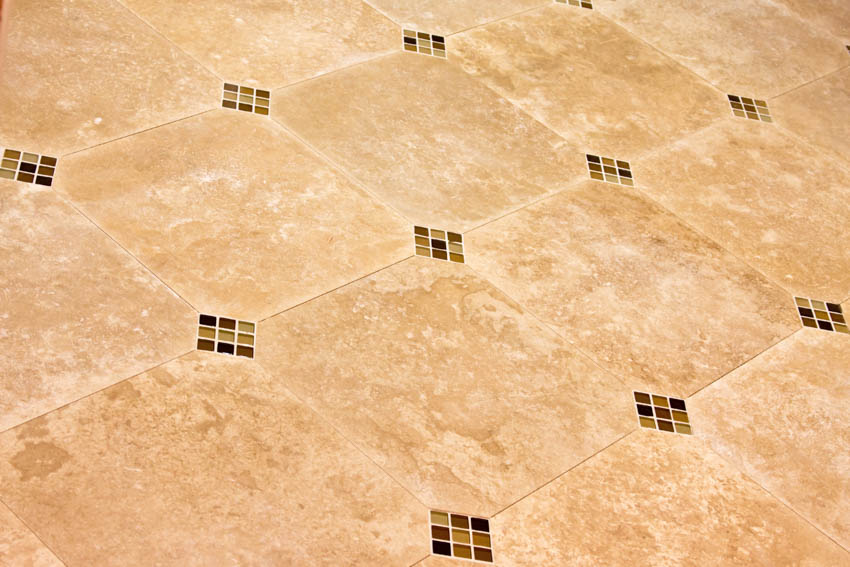
For purposes of smooth floor tiles, unfilled types of travertine can be processed and polished. Any pits and depressions can be filled, so as to create a less porous surface. Filling holes and voids will make cleaning much easier as well.
What Do You Fill Travertine Holes With?
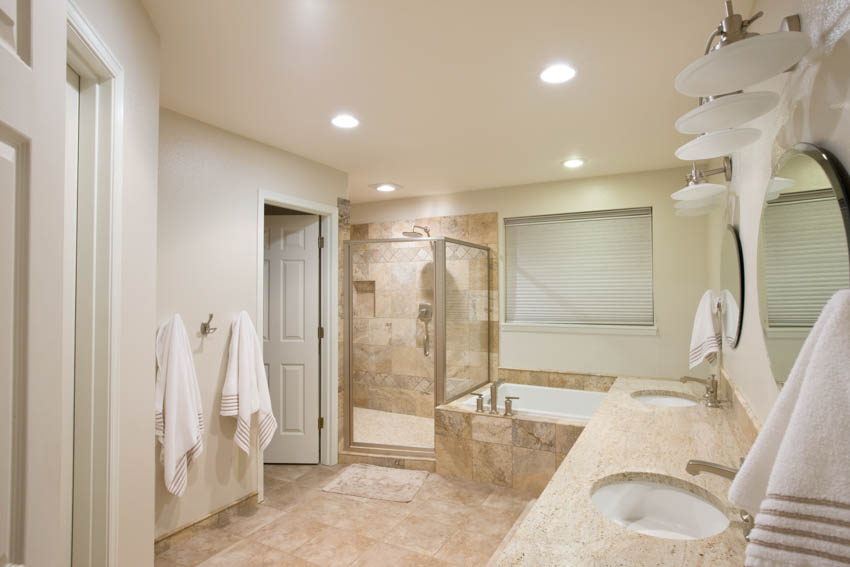
Generally, travertine tile manufacturers process the stones to fill any holes and voids. But after a few years of use, you may find these factory fillers coming out and revealing the original hole in your floor tile or backsplash.
If you find your tiles need to be refilled in some places, there are a couple of things you can do.
The first method makes use of an epoxy filler manufactured specifically for this purpose. Products like this come in colors that match most travertine tiles, such as beige or grey.
You usually need to mix this with a small amount of hardener, fill the holes, and wait for more or less ten minutes for it to set. This is best used for polished travertine.
Another way to fill travertine holes is to use non-sanded grout. This is ideal for wider gaps and more textured travertine tiles.
What Is the Best Cleaner for Travertine?
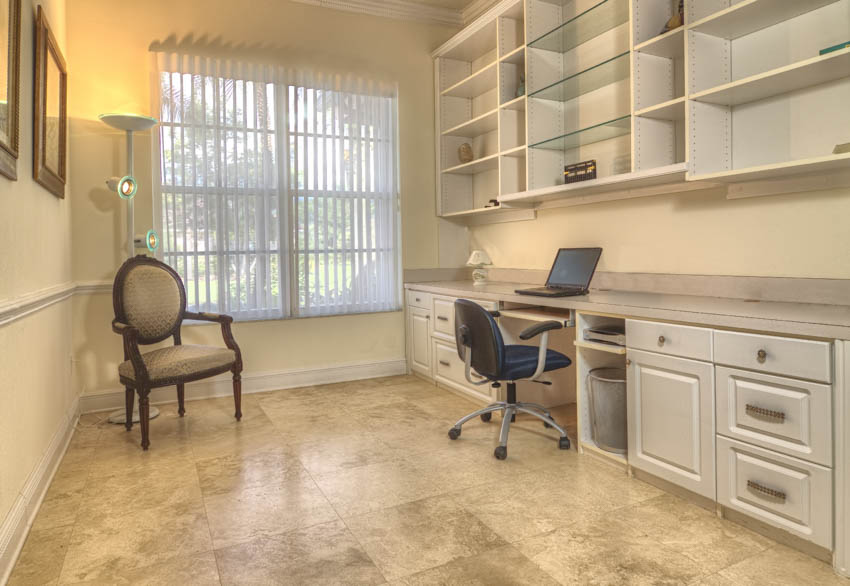
Travertine tiles are timeless in their design and purpose. However, you still need a little bit of maintenance work if you want your tiles to look good as new.
Interior: To clean interior stone, simply dry-mop the surfaces to remove dirt and debris. Wash them with clean water and a neutral (PH 7) and never with very abrasive solutions.
Ideally, it is best to use soapless water or at least biodegradable liquid dishwashing soaps, so as not to leave streaks and film behind.
Exterior: The different types of travertine installed outdoors must be subjected to regular cleaning. Simply rinse these natural stone pavers or wall tiles with clean water to avoid the accumulation of dirt.
For heavier impurities, use a soft-bristled brush. A pressure washer can also help in case of cleaning old buildings.
Is there any type of travertine that we missed or did you have specific questions that we not answered? Let us know what you think below. See more related content at our article about travertine patios on this page.


